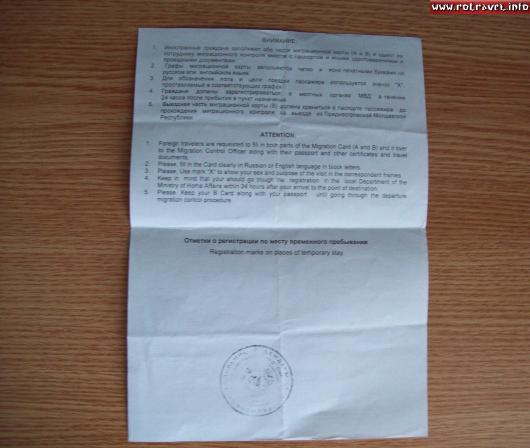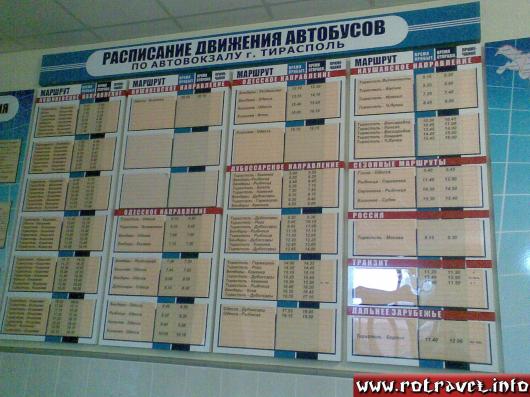Tiraspol (Romanian: Tiraspol; Russian: Тирасполь and Ukrainian: Тирасполь) is the second largest city in Moldova and is the capital and administrative centre of the de facto independent Pridnestrovian Moldavian Republic – Transnistria „PMR”).
The city is located on the eastern bank of the Dniester River.
Tiraspol is a regional hub of light industry, such as furniture and electrical goods production.
The toponym consists of two words: Tiras — the ancient Greek name for the Dniester River, and polis – city.
In 1989 the city had a population of about 190,000 and in 1992 203,000. 41% were Russians, 32% Ukrainians and 18% were Moldovans (Romanians).
Sister cities:
2004 Census in Transnistria:
Total population (including Bender): 555,347 (percentages below refer to this first figure)
Total population (minus Bender): 450,337
- Moldovans (Romanians): 31.9%
- Russians: 30.3%
- Ukrainians: 28.8%
- Bulgarians: 2%
- Poles: 2%
- Gagauz: 1.5%
- Jews: 1.3%
- Belarusians: 1%
- Germans: 0.6%
- Others: 0.5%
Transnistria, also known as Trans-Dniester, Transdniestria, and Pridnestrovie is a disputed region in southeast Europe.
Since its declaration of independence in 1990, followed by the War of Transnistria in 1992, it is governed by the unrecognized Pridnestrovian Moldavian Republic (PMR), which claims the left bank of the river Dniester and the city of Bendery (Tighina) within the former Moldavian SSR.
The modern Republic of Moldova does not recognize the secession and considers PMR-controlled territories to be a part of Moldova’s sovereign territory.
From Wikipedia, the free encyclopedia
Travel jurnal
„… Many people know about Tiraspol, but few of them had the chance to go there. We were lucky to pass a day on the left side of river Dniester.
From the beginning of the day, we took the bus from the Central station, not before to buy the tickets from a separated ticket office.
It costs 32 lei/person (~3$). After an hour, we arrived at the customs, where we were asked to leave the bus.
A nice woman, who takes care that every passenger passes the frontier, led us to the counter from where we could take an inquest to complete it an official procedure that allow you to pass in Transnistria.
We paid 22 lei/person after we stayed in a big crowd, whereupon the frontier guard gave us a part of the inquest without whom we don’t have the permission to leave Transnistria.
Before that, the persons who aren’t citizens of Republic of Moldova have to register to another wicket, it’s enough to show the passport. We returned at our bus and continued the road till the station of Tiraspol.
The driver stopped in Tighina for few minutes, before we passed through the bridge who rememberd me about the conflict of Transnistria form 1992.At the beginning of the bridge we saw a Russian tanc-a way for showing the power of those who were fighting for “liberty”.
In less than 15 minutes we arrived in Tiraspol, a city which seemed to be lost by civilization, people and modernization. The bus stopped at the railway station (also for buses) and the first thing we did was to ask for the left bus that goes to Chisinau.
Unfortunately, the reaction of the seller from the ticket office wasn’t so kind. I had to ask for three times that I get an uncertain answer. I noticed that on the wall of their booth was suspended the portrait of Smirnov-the transnistrian leader.
We changed money at an exchange and for 100 lei we received 70 transnistrian roubles. While we were looking around, we paid attention at a strange smell that came from the railway station. It was a stench emanated from the train which came from Russia and had a setback at the railway station from Tiraspol.
A lot of people who got out from the train had big teddy bears in their hands-maybe at Moscow they cost cheaper than in Transnistria, who knows?! 🙂
Averting from that stinking place, we decided to see the other part of the city, which had the same traits: old soviet buildings on which were put communist signs, bad roads, silent people-things that make you feel in another country, in another period, as in USSR.
We tried to find supermarket “Sheriff”, but, without luck, we asked the citizens (in Russian, of course!) to tell us where it is.
It’s interesting to know that in Tiraspol “Sheriff” is a common name for a stadium, for a football team, a supermarket, a sort of vodka (and so on), what can that mean?! Well, “Sheriff” is a quite big market, where you can find Russian and Ukrainian products, some of them cheaper than on the other side of river Dniester.
With 70 transnistrian roubles, we bought more than we could buy in Chisinau, with the same money.
It was already murk and we had to turn back to the station, to take the bus.
How we couldn’t receive an amenable answer from the ticket sellers, to know when the bus will come, we waited outside, in cold. We profited for that moment and we ate a bit of salad (bought from “Sheriff”) because we were very hungry.
We cut in with a girl who was waiting, as us the bus. At the beginning we spoke in Russian, but after we found out she knows Romanian, we changed the language. She was born in Tiraspol, but she is studying in Chisinau.
We forgot her name, but we remember she was talkative and positive. After waiting for an hour to appear a bus to take us from there, finally, a white Mercedes minibus, with a drunk driver, came for us.
We gave him 36 lei/person, (the price for a ticket) and we were happy to know that in an hour we will be at home.
We could warm up in that minibus, although near us was sitting a drunken man who believed we were going to Balti. He was stopped at the customs and obligated to pay a mulct. It was funny, because his family didn’t stop to argue him, while he was “high”. At the customs house, we showed that part of inquest which we completed when we entered in Transnistria.
They let us go. In more than one hour we were back in Chisinau. That sensation of old soviet atmosphere continued to rout us, even if we were pretty far from that place. Transnistria seems to be a forgotten place, where the people who live there have a strange way of acting, a strange behavior-always shy, always silent, with the eyes aimed on you.”

Here you are at the border and these blocks are from Tighina (Bendery in russian). Bendery is controlled by PMR.

A Sheriff supermarket. Sheriff (in Cyrillic: Шериф) is the second-largest company based in Transnistria.

After that,transnistrian policeman will register you. Half from the paper you must keep it with you because you cant leave Transnistria without that paper.



















